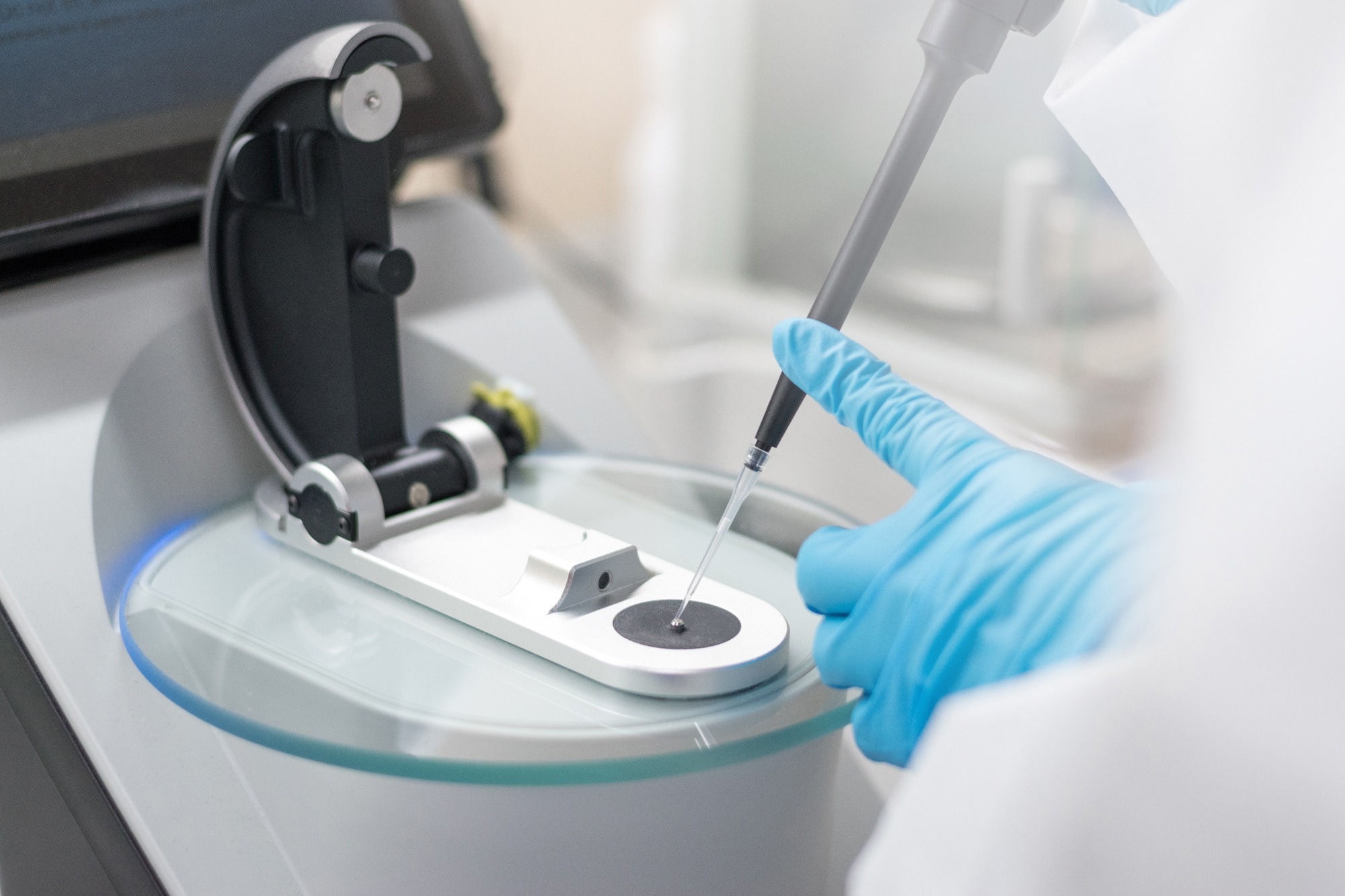A recent article in Small describes a modular platform for assembling protein-DNA composites using covalent, site-specific conjugation.
This method enables the formation of stable structures with precise control. The resulting constructs retain important functional properties such as enzymatic activity and fluorescence.
The approach uses both protein-protein and protein-DNA interactions to support hierarchical self-assembly into larger nanostructures.

Image Credit: BlurryMe/Shutterstock.com
Background
Earlier efforts to combine DNA and proteins often used non-covalent interactions or enzyme-based tags such as Snap-tag and HaloTag. While these methods offer some control, they come with drawbacks. They often need specially modified DNA, have low efficiency, and can be unstable under certain conditions.
To address these issues, the researchers use covalent and site-specific methods that work more reliably. One method uses a viral endonuclease domain from Muscovy duck circovirus (DCV) to attach proteins to single-stranded DNA. Another method uses the SpyCatcher/SpyTag system, which forms strong covalent bonds between proteins. Together, these two methods provide a flexible way to build large, organized structures while keeping the proteins functional.
The Current Study
This study combines new linking techniques with protein design and structural analysis. It focuses on two main systems. First, the DCV domain connects proteins to DNA through specific enzymatic activity, allowing precise control over where proteins are linked to DNA. Second, the SpyCatcher/SpyTag system links proteins together to form larger assemblies with defined shapes and sizes.
The researchers used both structural and functional proteins, including engineered coiled-coil domains and enzymes like luciferase. These proteins were produced, purified, and then linked to DNA. To build larger structures, the team used SpyCatcher/SpyTag to connect the DNA-linked proteins.
The resulting constructs were studied using several techniques. Size exclusion chromatography with multi-angle light scattering (SEC-MALS) was used to measure molecular weight and how many units were linked together. Small-angle X-ray scattering (SAXS) gave insight into the shape of the structures, and electron microscopy provided visual confirmation of the assemblies.
They also tested whether the proteins still worked after being linked and assembled. They measured luciferase activity and the fluorescence of tagged proteins. In addition, they showed that enzyme activity could be turned on or off by using DNA strand displacement—swapping out DNA strands to control function.
Results and Discussion
The study shows that this platform can reliably build protein-DNA nanostructures that retain their function. The covalent link between protein and DNA using the DCV domain was efficient and stable. These linked proteins could then be assembled into larger structures like nanofibers, nanorods, and nanospheres using the SpyCatcher/SpyTag method.
Tests confirmed that the assembled structures had the intended shapes and were stable. The proteins remained functional. Luciferase still worked, and fluorescent signals were strong. The ability to turn enzyme activity on and off using DNA strand displacement shows that these assemblies can be programmed to respond to different signals.
The results highlight how combining different covalent linking methods allows for stable, functional, and complex assemblies. Unlike earlier non-covalent systems, this platform supports higher-order organization without losing protein function.
It also allows different proteins and DNA types to be included, opening up many possibilities for building responsive, multi-use nanomaterials. Possible uses include biosensing, chemical reactions, drug delivery, and synthetic biology.
Conclusion
Being able to control enzyme activity through DNA strand displacement shows how programmable and responsive these nanostructures can be, great for use like biosensors, targeted treatments, and smart materials. The modular design means it’s easy to swap in different proteins or DNA sequences to meet different needs.
The study offers a reliable and adaptable way to design, build, and control complex protein-DNA structures. It sets the stage for future research into programmable biohybrid systems with a wide range of functions. These systems could help bridge the gap between molecular design and real-world applications in medicine, diagnostics, and bioengineering.
Journal Reference
Zhou W., et al. (2025). Programmable Protein-DNA Composite Nanostructures: from Nanostructure Construction to Protein-Induced Micro-Scale Material Self-Assembly and Functionalization. Small. DOI: 10.1002/smll.202502060, https://onlinelibrary.wiley.com/doi/10.1002/smll.202502060
